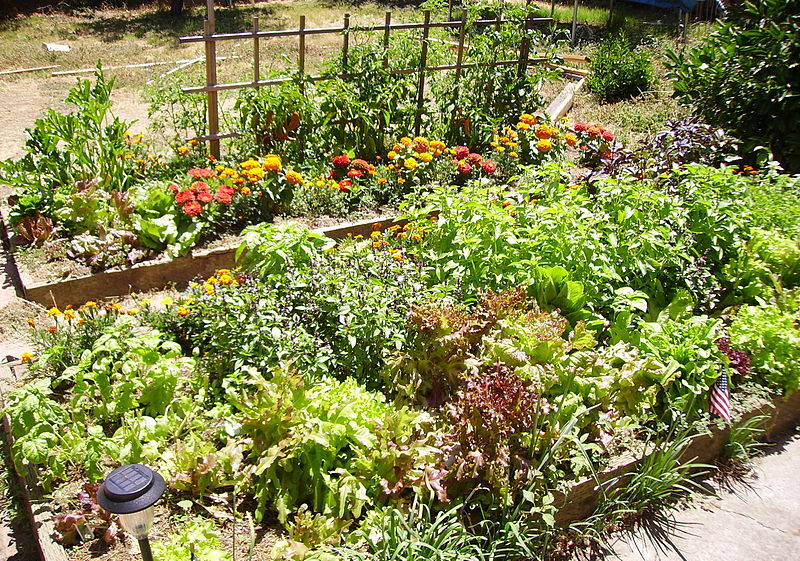Perhaps one of the biggest and most prominent advantages of raised garden beds is the fact that they make vegetable gardening a lot easier without putting undue strain on the back. People don’t need to bend as much to reach their plants which happens to be great for people with bad backs. With much easier access and obviously less pain you will be able to enjoy the fruits of your labor quite literally and your harvesting, tending and planting will be a lot more effective.
Other benefits of raised gardens
Raised garden beds are the best for smaller spaces as opposed to a conventional garden row. These are also great for poor, abused and rocky soil. The other advantage according to many organic gardeners is the fact that they produce a much better yield for the overall area that they occupy, this is thanks to much better drainage and the ability for the roots to go deeper.
It also allows for much longer growing seasons since it is possible to work the soil early in spring in places where that time of year usually means that the soil is frost hardened. Finally, people who don’t want to be troubled with weeds should also use raised gardens.
Building raised garden beds
Timber is the most commonly used materials to build garden beds but most readymade beds are made from metal and other materials. However, in order to properly support timber beds you need to place a few wooden stakes at every side as well as every few feet for much longer beds. These have to be placed on the inside of the bed so that these stakes are not easily visible.
The stakes will have to be driven around 60% or around 2 feet into the ground with the rest left exposed above the surface. The stakes will also need to be kept level so that they are all in the ground roughly at the same height or you may end up having an uneven or slanting bed to deal with. The lowest boards can be a few inches above the ground and use a levelling tool to check if they are straight.
Finally when fixing the boards with the stakes it is best to use galvanized nails since they don’t easily rust and are lot more sturdy than just iron. Add all additional boards in rows to the stakes.

Prepping the soil for raised beds
Raised beds are best filled with a mixture of compost, top soil and organic materials like manure in order to provide plants and especially vegetables with nutrient rich soil. The important thing to keep in mind when using raised dry beds is that the soil tends to dry more quickly. This may not pose much of a problem during fall and spring but in the summer you will need to add some mulch and straw on the soil to prevent this from happening.
Frequent watering is very critical to the success of raised beds during the early phase of plat growth. Other than that they need very little maintenance.
What to grow in raised garden beds?
Well almost any type of crop can be grown in these beds. However, vegetables happen to be the most common followed by shrubs, trees and fruit. That said there are some plants that may end up hanging over the edge so it’s important to think about where these beds are located and where you want to plant.
Buy readymade ones
People who don’t have the time or the expertise to build their own raised garden beds should choose readymade ones. These are often available in a number of different materials and engineered by experts so they last a lot longer and provide you with the best bang for your dollar.
Companies like Australia based Vegepod have some of the best raised garden beds to choose from and according to the company and a few experts maximizes the growth of vegetables and fruit alike. But before buying it would be a good idea to measure the space in which the bed will need to be located and then buy one of the right size which is easy to maintain.
Citations:
- Tips for a Raised-Bed Vegetable Garden
Mark has been an organic farmer for over twenty years. He belongs to a family of farmers who specialize in mainly organic farming methods. Even though he no longer works the land he does write extensively about it, often sharing his experience with aspiring growers and DIY people alike via his blog and publications.
